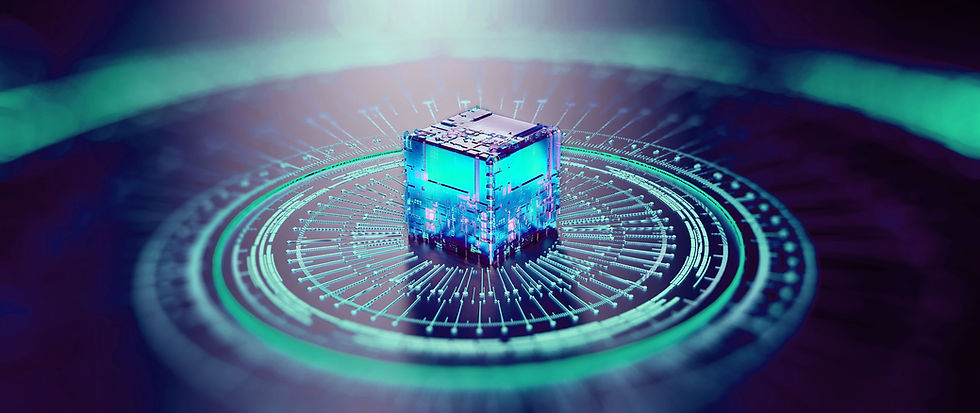Tesla Megapacks: Storing the Force of Nature
- Tomás Woods
- Feb 6, 2024
- 4 min read
As the world races toward renewable energy through solar, wind and tidal stream generators amongst other renewable sources, the demand for reliable energy storage facilities arises. Large battery accumulators must act above all, in correspondence with the environmental principle that drives renewables along with financial benefits that allows it to compete with today’s fossil fuel derived conventional energy sources. In this article we will explore Tesla Megapacks amongst other types of mass-electrical retention systems that are working 24/7 behind the scenes to power hundreds of thousands of homes every year, and how they are about to change the world.
According to a source of 2021, over 30% of the world’s total energy production now derives from fully renewable resources that come from primarily from hydropower, wind and solar respectively. What remains common to most renewables with the exception of hydropower however is that they only produce energy for a certain period of time, oscillating in dependance of external factors such as tides, wind velocity and sunlight intensity. For example, in the case of solar and referencing from daylengths here in Lisbon, solar panels can only feasibly operate for only around 10:30h a day during summertime. This means that if the world relied on solar or wind energy, it would have a blackout every time there was a lack of naturally incoming energy, which must without a doubt be avoided through the use of energy retention systems. However, massive battery packs can also have the utility of providing energy in places where the energy grid doesn’t reach or during a blackout caused by a storm, for example. The cases in which a city is supplied uniquely by renewables paired with battery packs are called microgrids, functioning independently from national grid-lines and tradition energy production facilities.
The Tesla Megapack has become today, one of the automaker’s growing sources of income, reportedly producing a revenue of over $1.5 billion dollars in Q1 2023 and accounting for 6.6% of its total revenue. This market expansion which is believed to grow by 24% through 2027 is inflating along with the global demand for clean energy which according to the International Energy Agency is believed to account of about 90% of the global electricity capacity expansion from 2022-27. In fact, electric car automakers, clean energy suppliers and operators are further rewarded with the selling of carbon credits which in Tesla’s case rendered over $282 million worth of revenue on Q2 of 2023 alone. In order to keep up with this growing demand of batteries, Tesla has built a dedicated Megafactory that is capable of producing up to 10,000 Megapacks annually which is equivalent to the energy storage of about 40GWh.
The Tesla Megapack has the same operating principle as all the other small-scale batteries used in Tesla vehicles and Powerpack (for businesses) except it can store over 200x the amount of energy of a single Powerwall (for residences). While Megapacks can be scaled infinitely to match the client’s requirements, a single unit can hold 3.9MWh of energy which is enough to power 3,600 homes for the period of one hour. With its built-in fan cooling system and a surrounding metallic structure, the packs are designed to sustain extreme weather conditions and temperatures that can range from -30℃ to 50℃ as proven during its usage from Alaskan tundras to Australian deserts. The Megapacks are also reliable enough to function under failure rates of under 0.001% while having proven to be cheaper to operate than some of the conventional energy sources like nuclear plants, natural gas and coal as stated in Tesla’s 2022 impact report.
But exactly what is the impact that such batteries bring to a sustainable future and how will they respond to a large scale in-let of production and out-let of recyclability? Well, everything draws back to how li-ion batteries are recycled, a process that is given start when the pack is brought to a facility and further dismounted into modules that facilitate maneuverability. It then goes into specialist facilities’ shredding machines which releases several bits of material classed as either black mass, copper and aluminum foils, separators (thin plastic films), plastics steel canisters or electrolytes. With the metal cannister and plastics taking their common recycling routes and some of the metal pieces discarded, black mass is the only component that can be restored back into raw materials that will make up the electrodes of future batteries. Recent industrial advancements have allowed for the recyclability of black mass undergoing process of either heat-based smelting (pyrometallurgy) or a liquid-based leaching process (hydrometallurgy). In the case of smelting, only the cobalt and nickel constituents can be effectively separated while leaching enables the recovery of lithium and manganese in addition to cobalt and nickel. While these processes are very energy intensive, require great land-area and aren’t so economically viable, an even newer small-scale schematic known as “cathode to cathode recycling” is being developed by modern-day startups to save energy by preserving the cathode while reducing transportation requirements. In fact, some companies such as Li-cycle have had such significant breakthroughs that 95% material recovery was achieved when recycling the batteries. With this in mind, despite the question of sustainability being raised during both the initial manufacturing stages of the batteries and that of its recycling, innovative breakthroughs have demonstrated that mass-retention battery packs are environmentally viable for the future.
Source in MLA format:
"Tesla $413M Megapacks Revolutionize Energy Grid." Carbon Credits, [https://carboncredits.com/tesla-413m-megapacks-revolutionize-energy-grid/](https://carboncredits.com/tesla-413m-megapacks-revolutionize-energy-grid/). Accessed 5 Jan. 2023.
"2022 Tesla Impact Report Highlights." Tesla, [https://www.tesla.com/ns_videos/2022-tesla-impact-report-highlights.pdf](https://www.tesla.com/ns_videos/2022-tesla-impact-report-highlights.pdf). Accessed 5 Jan. 2023.
"Tesla Megapack: What You Need to Know." EnergySage, [https://www.energysage.com/business-solutions/tesla-megapack-what-you-need-to-know/](https://www.energysage.com/business-solutions/tesla-megapack-what-you-need-to-know/). Accessed 5 Jan. 2023.
"Ficha Tecnica Mega Pack." Impulsora GDL, [https://impulsoragdl.com/wp-content/uploads/2020/09/Ficha-Tecnica-Mega-Pack.pdf](https://impulsoragdl.com/wp-content/uploads/2020/09/Ficha-Tecnica-Mega-Pack.pdf). Accessed 5 Jan. 2023.
"Global Energy Review 2021: Renewables." International Energy Agency, [https://www.iea.org/reports/global-energy-review-2021/renewables](https://www.iea.org/reports/global-energy-review-2021/renewables). Accessed 5 Jan. 2023."Renewable Energy." Our World in Data, [https://ourworldindata.org/renewable-energy](https://ourworldindata.org/renewable-energy). Accessed 5 Jan. 2023.
"Actual Hours of Sunshine - Portugal." World Data Info, [https://www.worlddata.info/europe/portugal/sunset.php](https://www.worlddata.info/europe/portugal/sunset.php). Accessed 5 Jan. 2023.
8Tesla, [https://www.tesla.com](https://www.tesla.com). Accessed 5 Jan. 2023.







Comments